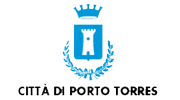On the other hand, for those who already know Asinara, it is also possible to visit on your own, on foot or by bicycle along the thematic trails marked out by the Park, or by renting bikes and electric cars.
The sea opens up a different perspective of the island: from excursions with fishermen, to sailing trips with sailboats or, for the more educated, diving with diving operators.
Since 2006, it has been possible to access the Marine Protected Area with private sailboats by stopping at the buoy fields, at the mooring, managed and present at various points along the coast, from Fornelli in the south to Cala d’Oliva in the east.
Another option offered to visitors is an overnight stay in one of the facilities in Cala d’Oliva.
The most scenically beautiful seasons are spring and early summer, when nature offers visitors the most beautiful blooms and when temporary wetlands and streams are still active, before summer drying up due to the Mediterranean climate.
In autumn, winter and spring, walks and hikes along the island’s trails allow people to discover isolated and unspoiled places that are more difficult to reach in the summer season due to high temperatures.
In July and August, it is preferable not to consider hiking and to favor all other modes. In fact, it is recommended to walk only short stretches, preferably in contact with the sea, given the absence of continuous tree cover and the high temperatures. Given the heat of the summer period, it is important to ensure that you always have adequate water supplies and necessary sun protection with you.
The kiosk in the Fornelli locality, the bar service at Cala Reale, the restaurant/bar L’Asino Bianco, the Locanda del Parco, and the Hostel-Restaurant in the Cala d’Oliva locality are present on the island, providing refreshment and overnight services.
Asinara Island can also be reached by a public boat service provided by the Delcomar Navigation Company, which operates in the “Dogana-Segni” pier on the Porto Torres-Cala Reale route. Ferry schedules vary throughout the seasons.
For information on routes and schedules, contact the ticket office directly at the Porto Torres Maritime Station or visit
www.delcomar.it
Visitors arriving at Cala Reale by ferry in territorial continuity with the Municipality of Porto Torres will receive information from the guides at the visitor centers about the activities and visits possible in Asinara National Park.













